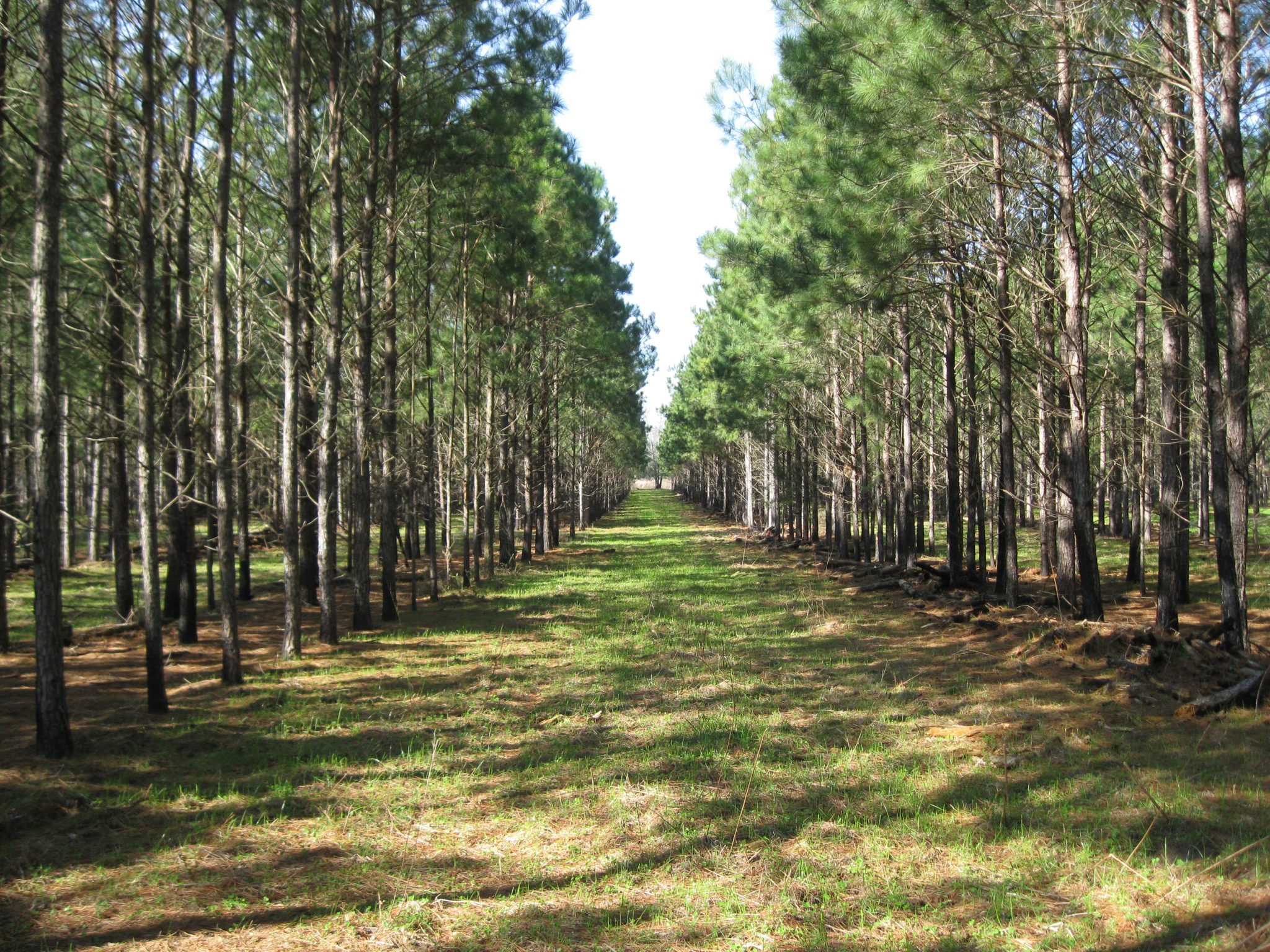Forages

Silvopasture is a management system that combines the production of trees, forage, and livestock. It requires knowledge and intense management of all three components and, for that reason, can be a daunting task. For many farmers, however, the biggest roadblock may simply be their perspective. Planting trees on farmland carries with it a specific aversion based on the misconception that trees are an unproductive use for land, that they create a biological monoculture, and that they make it difficult to effectively manage livestock and forage. Lack of technical knowledge of growing trees as a crop also discourages farmers. This publication addresses some of those concerns and misconceptions in an effort to overcome this perspective and roadblock for this group of landowners.
“If I had 1,000 acres . . . ”
Sometimes farmers state that they would try their hand at a silvopasture management system if they had extra land “just lying around.” Within this context, silvopasture seems like a great idea for someone who has land to “waste.” Farmers typically focus on short rotations, at least relative to the time it takes to complete a timber rotation. In other words, they believe that land devoted to growing trees is unproductive compared to that used for crop production.
A silvopasture, however, operates differently from the typical forest plantation. The design of the system creates space for forage, which, depending on the design of the system, can grow at rates comparable to open pasture. Trees also serve to improve the nutrient availability to shallow-rooted grasses and legumes by cycling nutrients from the subsoil. On marginal farmland where it is difficult to establish high-quality pastures, trees may actually increase forage production on the site. Finally, trees must be considered one of the crop components of the silvopasture. Trees may not provide annual income (although trees may be selected to produce an annual nut or pine straw harvest), but in order for the system to be correctly managed, they must be considered one of the end products.
“Tree plantations are a biological wasteland.”
Farmers may perceive rows upon rows of trees as lacking in biological diversity. Silvopasture, however, forms a necessary middle ground that can appeal to farmers while providing both cover and open space that bridges the gap between open farmland and dense forest. Trees provide roosts for eastern wild turkey and cover for wildlife, including white-tailed deer, and tree species that produce hard or soft mast for additional forage can be selected. Native tree species such as longleaf pine may also be selected to recreate habitats for endangered or threatened species.
The open understory of silvopasture, which is absent in an overly dense forest, provides foraging opportunities for song birds, northern bobwhite, and eastern wild turkey. Forage can be selected to improve not only grazing opportunities for livestock but also nesting habitat for game birds such as northern bobwhite and eastern wild turkey. The forage creates a permanent ground cover, which slows erosion and improves water quality, thus benefitting both waterfowl and aquatic species. Silvopasture has the capacity to not only maintain current wildlife habitat and ecological diversity but also to improve it as well.
“There’s a reason pastures don’t have trees.”
Trees are typically cleared out of pastures to provide easy access for equipment and livestock and to provide more sunlight for grasses and legumes. This is a no-brainer, so why would a farmer ruin a perfectly good pasture by planting a bunch of trees?
First, equipment can be used in a silvopasture system that has been thoughtfully established. Trees can be planted in rows with alleys wide enough for bush hogs, hay equipment, or planters. Planting in rows may also be helpful in preventing livestock damage, as moveable fences can be used as barriers around rows.
Although trees do shade grasses and legumes, they also serve to extend the season of cool-season grasses by providing a cooler microclimate as days get warmer. Common warm-season pasture grasses such as bermudagrass and bahiagrass can be used in a silvopasture as well. Silvopasture can increase the productivity of livestock that benefit from protection from wind and heat.
An even distribution of trees also spreads livestock evenly throughout a site instead of concentrating them under minimal shade, which causes them to trample the forage and potentially damage soil quality as well.
“I don’t know anything about growing trees.”
Outside of the biological rules that govern all plant species, trees can be very different from other plants grown on a farm. Planting, maintenance, and harvest all require technical knowledge that may be new to farmers. A variety of resources are available to farmers considering establishing silvopasture, a few of which are listed below.
Considering Silvopasture?
- Become familiar with the different designs and options.
- Choose a design that is best adapted to your farm site and that meets your objectives. Consider soils, topography, and climate.
- Choose a tree species that will be successful on the site and that will meet your objectives. Tree species will have a great effect on the design and function of the silvopasture, from the final products to the length of the crop rotation.
Silvopasture will not fit on every farm or work for every farmer. It requires an intense level of management of trees, forage, and livestock to be successful. However, all farms stand to benefit from a diversified income with a long-term, high-value crop. It may just mean a change in perspective.
Resources
The National Agroforestry Center – silvopasture
- unl.edu/nac/silvopasture.htm
The Center for Agroforestry at the University of Missouri
- centerforagroforestry.org
“Silvopasture: Establishment and Management Principles for Pine Forests in the Southeast U.S.”
- silvopasture.org/pdf_content/silvopas- ture_handbook. pdf
“Silvopasture: 30 Years of Applying Research & Innovation”
- youtube.com/ watch?v=vJsKmbbtw7Q
“Silvopasture: An Opportunity for Additional income from Your Forestland” ANR-1399 ACES Publication
Anne Randle, Graduate Research Assistant, and Rebecca Barlow, Extension Specialist, Professor, both in the School of Forestry and Wildlife Sciences, Auburn University
Reviewed July 2021, Silvopasture from a Farmer’s Perspective, FOR-2011

